
Although almost any rock/stone/mineral can be used in viewing stones, the table below shows some of the most popular:
Gneiss
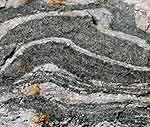 |
Gneiss is a typical metamorphic rock type, in which a sedimentary or igneous rock has been deeply buried and subjected to high temperatures and pressures. Nearly all traces of the original structures (including fossils) and fabric (such as layering and ripple marks) are wiped out as the minerals migrate and recrystallize. The streaks are composed of minerals. Gneiss can totally recrystallize into granite. Despite the highly altered nature of gneiss, it can preserve geochemical evidence of its history, especially in minerals like zircon which resist metamorphism. The oldest crustal rocks known are gneisses from western Greenland, nearly four billion years old. Gneiss is an old German word meaning bright or sparkling.
|
Jasper
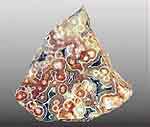 |
Ocean Jasper is an agate by the standard definition (agate being translucent and jasper being opaque). Ocean Jasper is rarely opaque. It was decided to call the material a jasper because rhyolitic patterns have been associated with the jasper category in the past and because "jasper" is listed as the mineral resource in the mining claims owned by Madagascar Minerals.
|
Petrified Wood
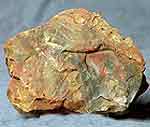 |
Petrified wood" are logs or branches of fallen trees, chiefly evergreen, which grew in the Triassic Period (240 to 205 million years ago). They have turned to stone through a process of dissolved silica and other minerals seeping into and replacing the wood fiber. All of the petrified wood at ArtGeo was gathered on privately-owned land, most, but not all, in Arizona (USA). All of it is completely legal to buy and own. Whether cut and polished, or in their natural state, these "one-of-a-kind" pieces of petrified wood are unusual, interesting and quite beautiful.
|
Jadeite
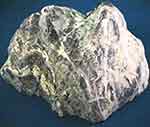 |
Jadeite is one of the two minerals called jade. The other jade mineral is nephrite, which is a variety of actinolite. Jade has been used for eons in China and Central America as an ornamental and religious stone of deep significance. The nephrite jade was used mostly in China, although both have been used in both regions. Nephrite is more abundant than jadeite and has few color varieties, ranging only from creamy white to green. Jadeite is found in strongly metamorphosed sodium-rich serpentinous rocks, and is named from the Spanish "piedra de ijada" (stone of the side) as it was thought to cure kidney stones and other kidney ailments. Jadeite is commonly grayish green, and may also be white, a pale blue-gray, or even a pale purple.
|
Diopside
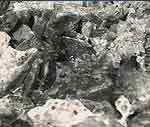 |
Diopside is an important rock forming mineral in several metamorphic and basic to ultra basic igneous rocks, also found in meteorites. Diopside has several varieties, including a chromium-rich gem variety called chrome diopside. Violan is rare blue variety found in some localities in Italy. There is also a green "cat's eye" variety that contains minute inclusions, probably of rutile, that reflect light in such a way as to produce a lively linear luminscence within the crystal. Still another variety is quite dark, with included rutile needles aligned so as to produce a 4-rayed star, hence the name star diopside. Ordinary diopside is typically white or green and can have a nice glassy luster, often cut for gemstones.
|
Serpentine
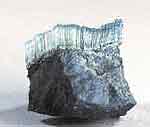 |
Serpentine rock is apple-green to black and is often mottled with light and dark colored areas. Its surfaces often have a shiny or wax-like appearance and a slightly soapy feel, usually fine-grained and compact but may be granular, platy, or fibrous. Serpentine occurs in central and northern California -- in the Coast Ranges, the Klamath Mountains, and in the Sierra Nevada foothills. Serpentine rock is primarily composed of one or more magnesium silicate minerals such as chrysotile -- often occuring as fibrous veinlets in serpentine, the most common type of asbestos which separates into thin, strong, and flexible fibers that are heat resistant. Serpentine often contains some asbestos, and should be used with caution.
|
Chrysophrase
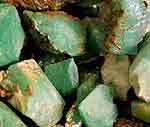 |
Chrysophrase (aka Chrysoprase) is light green to apple green in color, named for the Gaspe' Peninsula in Quebec where it was originally found. The color comes nickel sulfides. Chrysoprase is the most valued variety of the mineral chalcedony (microcrystalline quartz) that contains nickel, giving it an apple-green color. It is porous and translucent, usually cut as a cabichon, and has been used since ancient times. Chrysoprase has a hardness of 7 and a specific gravity of 2.6. Chrysoprase is mined in Australia, Russia (the Ural Mtns.), Brazil, and the western USA. Chrysoprase is sometimes called "Australian jade," but it is not related to jade. Hard-to-detect imitation chrysoprase is made by staining agate with chromium salts.
|
Rhodonite
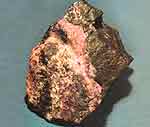 |
Rhodonite is named after the Greek word for rose, rhodon, with a beautiful, distinctive rose-pink color, streaked with white minerals such as calcite and is reactive to acids. Rhodonite often has black manganese oxide veins running through it, giving it a distinct appearance. Transparent crystals are rare and fragile. But some are still found and distributed on the mineral markets. They come from a few notable localities and are considered classics by collectors. Crystals are generally translucent and rarely transparent. It is often carved into beads, cabochons, and ornamental objects. In 18th century Russia, it was used extensively for decorating the Russian court.
|
Granite
 |
Granite is a phaneritic igneous rock (volcanic rock that has cooled) that is light-colored and coarse grained; it is composed of at least 65% silica. Granite is characterized by the minerals orthoclase and quartz with some plagioclase feldspar and iron-magnesium minerals. Granite underlies much of the continents. Granite consists of 20 or more percent quartz, more alkali feldspar than plagioclase. Colors - typically overall gray or salmon pink to nearly brick red. Minerals found in granite: quartz -- colorless, milky white or smoky; alkali feldspar, off-white, light tan, salmon-pink to nearly brick-red; plagioclase feldspar, off-white to buff.
|
Basalt
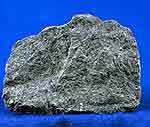 |
Basalt Typically a volcanic rock, although may also be the result of relatively shallow magma intrusions. Dark colored, fine-grained, and composed primarily of the feldspar mineral Calcic Plagioclase and the amphibole mineral Pyroxene. Basalt is most often associated with ocean crust volcanics like Hawaii, but also often occurs on continents, sometimes as great layered flows like the Columbia River Basalts.
|
Feldspar
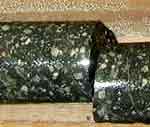 |
Feldspars are the most widespread mineral group, occurring in all types of rock and comprising about 60% of the Earth's crust. Feldspars are relatively hard at 6 on Mohs' hardness scale. Feldspars are generally light-colored, including white, pink, tan, green, or gray. The color varies due to impurities within the crystal structure. Feldspar is the mineral that gives granite its pink, green or gray color. When feldspar weathers from igneous or metamorphic rocks, it can accumulate as sand. It is easily weathered and will break down into clay. Used for glass and ceramic industries, pottery, enamelware, soaps, abrasives, bonds, cements, concretes, insulating compositions, fertilizer, poultry grit, tarred roofing materials, and filler in textiles and paper.
|
Calcite
 |
Dripstone is a general term for calcite or other mineral deposit formed in caves by dripping water. It includes stalactites and stalagmites, as well as similar deposits formed by flowing water. Highly variable in form and color, calcite is best recognized by its relatively low hardness (H = 3) and its high reactivity with even weak acids, such as vinegar. Found in most low temperature geologic settings and as a later forming replacement mineral in most other environments in one form or another, it is most common as massive material in limestones and marbles.
|
Nephrite
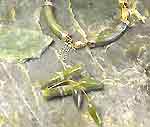 |
Nephrite is a semi-precious stone, a variety of jade (sometimes called greenstone). Two different minerals are known as jade, jadeite and nephrite. Nephrite is slightly softer that jadeite and is often veined; it is used in carvings and for making beautiful bowls and vases.
It is semitransparent to translucent, can be white, gray, grayish-blue, grayish-red, grayish-green, brown, lavender, and all shades of green. A rare bluish nephrite jade, called Pacific Blue Jade, is found north of San Francisco, California, USA, as a vein within a serpentine. It has a hardness of 5 to 6, but is very tough due to its fibrous habit. Found in Alaska, British Columbia, Wyoming, China, and Siberia.
|
Limestone
 |
Lime is a general term used for various forms of a basic chemical produced from calcium carbonate rocks such as limestone and dolomite. Quicklime is calcium oxide or calcium-magnesium oxide. Most lime is produced by calcining (burning) limestone or dolomite. Lime has been used for thousands of years for construction. Archeological discoveries in Turkey indicate lime was used as a mortar as far back as 7,000 years ago. Ancient Egyptian civilization used lime to make plaster and mortar. In the United States, lime use has changed dramatically. In 1900, more than 80% of the lime used in the U.S. was for construction uses. Today, nearly 90% is used for chemical and industrial uses.
|
Rhyolite
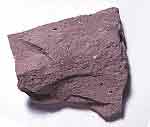 |
Rhyolite is the aphanitic equivalent of granite. It is light gray, yellowish, cream, mauve, tan to medium brown, light to brick-red and uncommonly mottled or banded (e.g., wonderstone).
Rhyolites are a group of extrusive (volcanic) igneous rocks with phenocrysts (visible crystals that grew out of the molten lava) of quartz and alkali feldspar in a glassy to cryptocrystalline groundmass.
Many rhyolites are porphyritic with quartz and one or two feldspars as their common phenocrysts. -- Identifying the minerals that occur as phenocrysts in porphyries is the method often used by geologists to name handspecimens of aphanitic rocks.
|
Sitemap |
Search This Site
Home |
Contact Us |
Sign Our Guest Book |
Your Pages on Suiseki.com |
About Suiseki.com
All About Suiseki |
History |
Classifications |
Glossary |
Collecting |
Evaluating |
Classifying |
Preparing |
Aesthetics
Displays |
Rocks |
Bonsai & Suiseki |
Gallery |
Collectors |
Links |
Miscellaneous
© Suiseki.com ~ The Art of Stone Appreciation
P.O. Box 84, Albion, CA 95410 (707) 937-4715
E Mail:
Mike@Suiseki.com
Technical Comments:
mbouquin@mcn.org
|